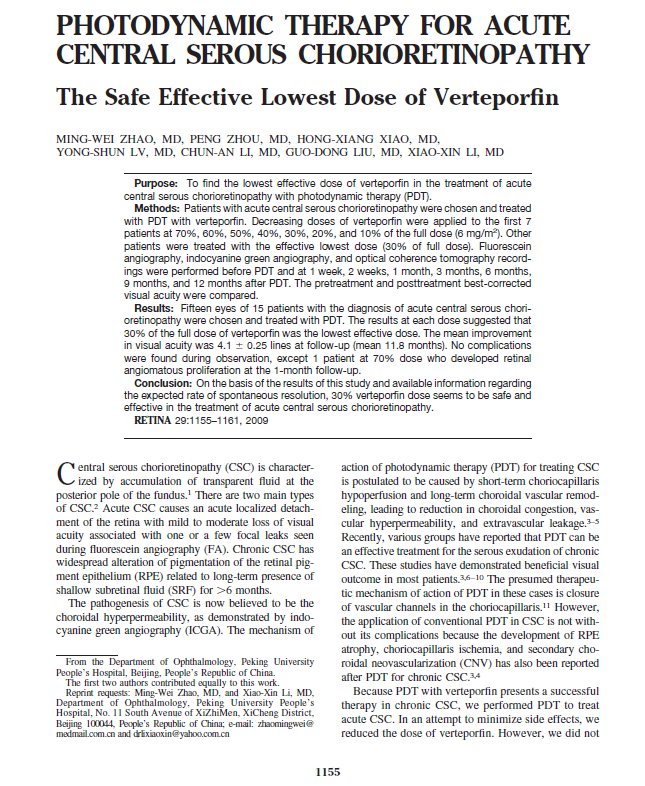
Author information
- 1
- Department of Ophthalmology, Peking University People’s Hospital, Beijing, People’s Republic of China. zhaomingwei@medmail.com.cn
Abstract
PURPOSE:
To find the lowest effective dose of verteporfin in the treatment of acute central serous chorioretinopathy with photodynamic therapy (PDT).
METHODS:
Patients with acute central serous chorioretinopathy were chosen and treated with PDT with verteporfin. Decreasing doses of verteporfin were applied to the first 7 patients at 70%, 60%, 50%, 40%, 30%, 20%, and 10% of the full dose (6 mg/m). Other patients were treated with the effective lowest dose (30% of full dose). Fluorescein angiography, indocyanine green angiography, and optical coherence tomography recordings were performed before PDT and at 1 week, 2 weeks, 1 month, 3 months, 6 months, 9 months, and 12 months after PDT. The pretreatment and posttreatment best-corrected visual acuity were compared.
RESULTS:
Fifteen eyes of 15 patients with the diagnosis of acute central serous chorioretinopathy were chosen and treated with PDT. The results at each dose suggested that 30% of the full dose of verteporfin was the lowest effective dose. The mean improvement in visual acuity was 4.1 +/- 0.25 lines at follow-up (mean 11.8 months). No complications were found during observation, except 1 patient at 70% dose who developed retinal angiomatous proliferation at the 1-month follow-up.
CONCLUSION:
On the basis of the results of this study and available information regarding the expected rate of spontaneous resolution, 30% verteporfin dose seems to be safe and effective in the treatment of acute central serous chorioretinopathy.